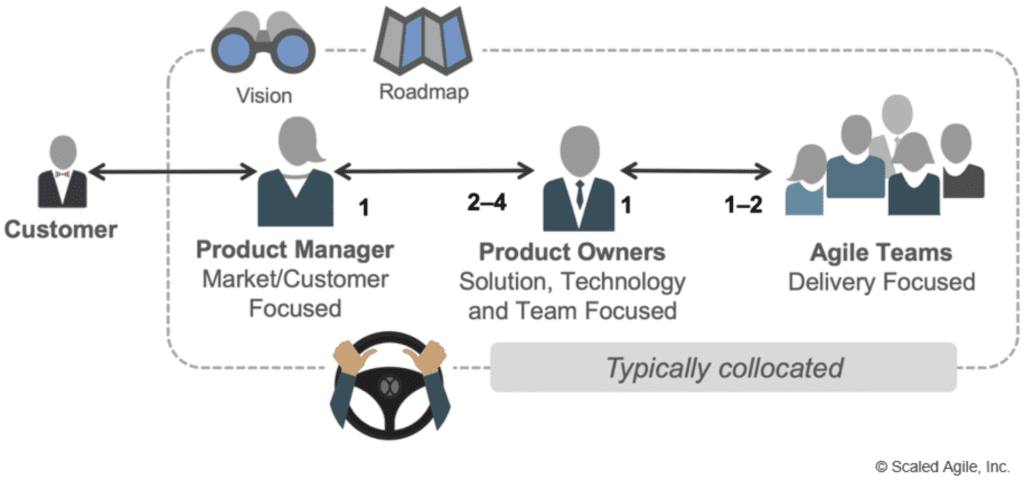
Both product owners (POs) and product managers (PMs) have “product” in their titles. Both roles connect people to the customer to ensure we’re building the right thing. Both roles rely on data to inform decisions and spot trends by correlating that data to everything that’s going on across the organization. Both roles manage backlogs. And both roles make customers happy. So, what’s the difference between a PO and a PM?
Product managers concentrate on the program backlog and features, look one to three program increments ahead, and focus on product viability. They collaborate with business owners and those at the solution and strategic levels within SAFe®.
Product owners concentrate on the team backlog and stories, look one to three months ahead, collaborate with the team, and focus on product feasibility.
Seems straightforward enough, but we’ve heard feedback from people in the field that the PO-PM structure within SAFe isn’t so great.
“I’ve trained dozens of teams who are using SAFe and I have never seen this work well. The Product Owners are disconnected from their users and incapable of creating effective solutions for them that really solve their problems, because they do not understand the problems well. The Product Managers are essentially ‘waterfalling’ down the requirements to them and the teams are not allowed to prove if these are the right things to build or not. No one is doing validation work.”
—Melissa Perri, Product Manager vs. Product Owner
The feature factory
What’s described above is something many call “the feature factory.” Organizations quickly fall into the feature-factory trap when POs stop talking to external customers, going with the word of the PM instead and losing sight of the user’s needs. It also happens when PMs become disconnected from the teams, choosing to write requirements that are handed off to POs instead of aligning with teams and POs on objectives about how to best achieve them. By not connecting with the team, over time, PMs start making all the decisions on their own and there’s no room for teams to provide ideas to their own backlogs—essentially ‘waterfalling’ their PIs as described above and creating a culture of meeting acceptance criteria instead of focusing on objectives.
We often also see feature factories when PMs and POs never say “no” to requests from customers or business owners. Catering to the desires of a few large clients or to executives’ individual objectives can cause PMs and POs to drop validation work and strategy in response to those requests. Without validation work, there aren’t any clear pivot-or-persevere moments for checking in to see if we’re understanding the problem correctly or even solving their problems. Instead, we’re practicing waterfall and calling it SAFe.
In this blog series, William Kammersell, our curriculum product manager, and I will share practices to help you avoid the feature factory and create a healthy PO-PM relationship that drives product success.
Read the next post in the series here.
About Lieschen Gargano Quilling

Lieschen Gargano is an Agile coach and conflict guru—thanks in part to her master’s degree in conflict resolution. As the scrum master for the marketing team at Scaled Agile, Lieschen loves cultivating new ideas and approaches to Agile to keep things fresh and exciting. She also has a passion for developing best practices for happy teams to deliver value in both development and non-technical environments. Fun fact? “I’m the only person I know of who’s been a scrum master and a scrum half on a rugby team.”
Share:
Back to: All Blog Posts
Next: Elevate Your Remote Production to Super Awesome